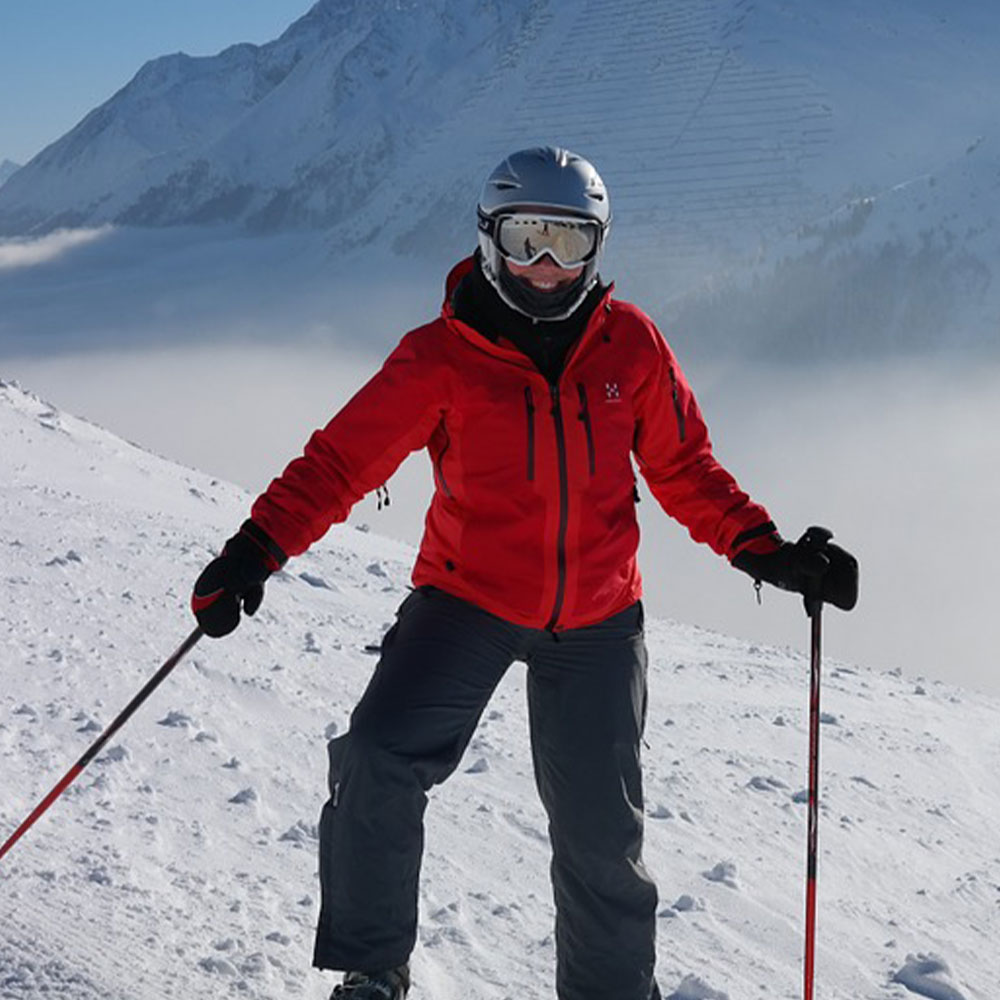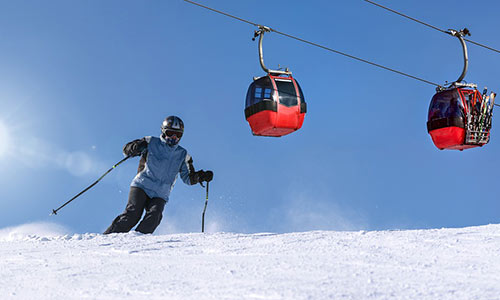Guide to Layering Up Clothes for a Skiing Day
Author

A keen runner, skier and nuts about cycling. Karl lives in Cumbria, where he loves encouraging his two children to follow in his outdoor lifestyle. Whilst out and about keeping active, Karl keeps a diary and shares it with Outdoor Look.
Every adventurous endeavour needs a different gear, if you are eager to enjoy the activity to the fullest. They are called “essentials” only because they are important. For instance, you are planning a skiing trip but may not want to carry a load of clothes. While everyone wants to travel light, layers of clothes can protect you against fierce winds and snow. Therefore, to avoid such experiences, you should always carry some extra layers to cover yourself properly.
Here we have provided the three main tips that you should keep in mind while you’re getting dressed for a day on the slopes:

Layering System
The weather almost never stays the way you think it would. So, follow a layering system with layers which allow you to be able to easily add or remove. This will help you stay comfortable during the trip.
Breathability
The next important thing to keep in mind is the breathability of the fabric. While you are sliding through the sleet on slopes, you are bound to perspire and this requires you to wear clothes with waterproof as well as warmth-retaining characteristics.
Protection
The last but certainly not the least, is that the layers you carry must provide you with all the protection you would need over from the gradients of the inclines. The clothes should be dry and warm at the same time, so you not even once have to feel uncomfortable on your trip.
Now, let us talk a little about the layering system. There are 3 major layers you should carry on a ski trip: base layer, middle layer, and outer layer.
Base Layer: The first layer of resistance from the cold weather is provided by the base layer. It should always be there as they are designed to maintain your body temperature. They work as a thin, yet warm insulation against your body.
Mid Layer: The middle layer of clothes assists the function of the base layer by adding to its insulation power. It does so by trapping air between layers and providing warmness with comfort. It is important that you stock up on lightweight middle layers, such as a hoodie, so it does not restrict your movement.
Outer Layer: If you have taken care of the base and mid layers, the main layer of protection, the outer layer, should be able to completely protect you from snow and cold winds. There are ski jackets especially designed to preserve the heat between the layers and provide you the warmth you require.

Auxiliaries: In addition to all these layers, you should also carry a pair of gloves, hat and Scarf/Balaclava. They can be helpful in providing insulation from snowy winds.
Now, you know how to layer up for a skiing trip and protect yourself from the cold weathers of skiing areas. All this information will definitely help you get through your favourite ski trips with ease, warmth and comfort.
Author

A keen runner, skier and nuts about cycling. Karl lives in Cumbria, where he loves encouraging his two children to follow in his outdoor lifestyle. Whilst out and about keeping active, Karl keeps a diary and shares it with Outdoor Look.
Categories
- Sport (28)
- Product Reviews (3)
- Team Outdoor Look (7)
- Mike Wild (2)
- Mike Payton (2)
- Suse Hammond-Pears (3)
- Snowboarding (12)
- Latest Offers (105)
- Shop Talk (1)
- Competitions (7)
- Walking (413)
- Lifestyle Fashion (8)
- Travel (86)
- Kit Guides (176)
- Workwear Clothing (6)
- Safety Workwear (4)
- Health/Fitness (289)
- Skiing (91)
- Great Outdoors (1316)
- Cycling (92)
- January 2025
- December 2024
- November 2024
- October 2024
- September 2024
- August 2024
- July 2024
- June 2024
- May 2024
- April 2024
- March 2024
- February 2024
- January 2024
- December 2023
- November 2023
- October 2023
- September 2023
- August 2023
- July 2023
- June 2023
- May 2023
- April 2023
- March 2023
- February 2023
- January 2023
- December 2022
- November 2022
- October 2022
- September 2022
- August 2022
- July 2022
- June 2022
- May 2022
- April 2022
- March 2022
- February 2022
- January 2022
- December 2021
- November 2021
- October 2021
- September 2021
- August 2021
- July 2021
- June 2021
- May 2021
- April 2021
- March 2021
- February 2021
- January 2021
- December 2020
- November 2020
- October 2020
- September 2020
- August 2020
- July 2020
- June 2020
- May 2020
- April 2020
- March 2020
- February 2020
- January 2020
- December 2019
- November 2019
- October 2019
- September 2019
- August 2019
- July 2019
- June 2019
- May 2019
- April 2019
- March 2019
- February 2019
- January 2019
- December 2018
- November 2018
- October 2018
- September 2018
- August 2018
- July 2018
- June 2018
- May 2018
- April 2018
- March 2018
- February 2018
- January 2018
- December 2017
- November 2017
- October 2017
- September 2017
- August 2017
- July 2017
- June 2017
- May 2017
- April 2017
- March 2017
- February 2017
- January 2017
- December 2016
- November 2016
- October 2016
- September 2016
- August 2016
- July 2016
- June 2016
- May 2016
- April 2016
- March 2016
- February 2016
- January 2016
- December 2015
- November 2015
- October 2015
- September 2015
- August 2015
- July 2015
- June 2015
- May 2015
- April 2015
- March 2015
- February 2015
- January 2015
- December 2014
- November 2014
- October 2014
- September 2014
- August 2014
- July 2014
- June 2014
- May 2014
- April 2014
- March 2014
- February 2014
- January 2014
- December 2013
- November 2013
- October 2013
- September 2013
- August 2013
- July 2013
- June 2013
- May 2013
- April 2013
- March 2013
- February 2013
- January 2013
- December 2012
- November 2012
- October 2012
- September 2012
- August 2012
- July 2012
- June 2012
- May 2012
- April 2012
- March 2012
- February 2012
- January 2012
- December 2011
- November 2011
- October 2011
- September 2011
- August 2011
- May 2010
- April 2010
- March 2010
- February 2010
- January 2010
- November 2009
- October 2009
- September 2009
Submit a Comment